- October 19, 2023
Horse Chiropractors: What Do They Do? (Vet Answer)
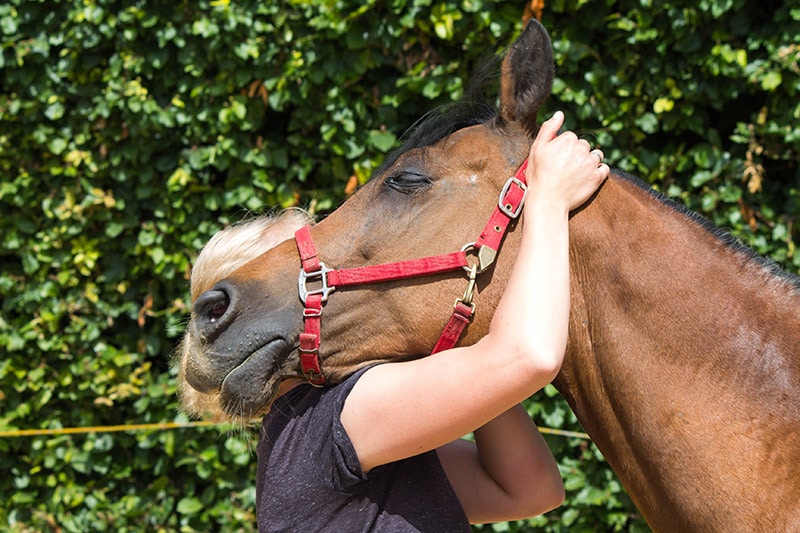
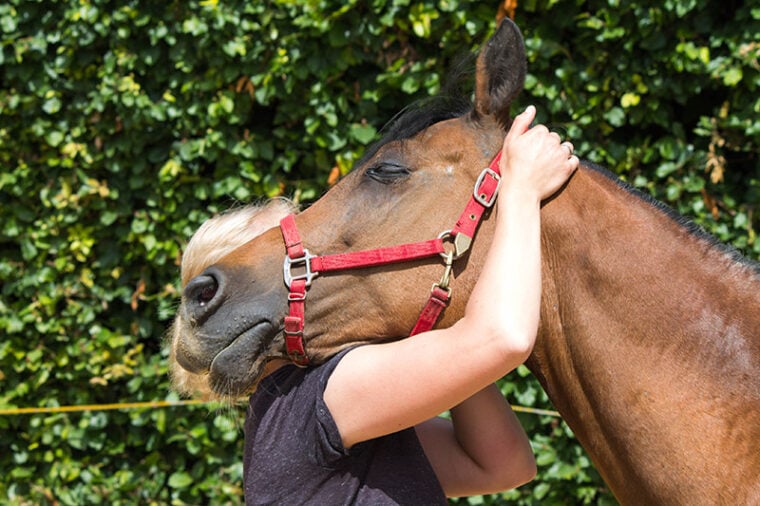

The information is current and up-to-date in accordance with the latest veterinarian research.
Horses’ backs are complicated structures. Whether they are performance horses or a child’s trekking pony, their backs are put through so much work and strain during their lifetime. There are muscular, joint, and neurological components that all need to work together harmoniously otherwise problems quickly arise.
Muscular and skeletal injuries can be acute or chronic, and your vet will be able to address and diagnose these issues. Often a chiropractic consultation will be recommended by your vet alongside treatment to aid in the correct functioning of the back to ensure your horse is comfortable. This article will discuss what an equine chiropractor is, how they treat horses, what sort of conditions they treat, and the typical duration of treatment.

How Does Horse Chiropractic Work?
Over the years, we have domesticated horses and we spend a lot of time sitting on their backs. Horses often suffer from back, limb, or pelvic pain that requires attention from a horse (equine) chiropractor.
A chiropractor specializes in the treatment of the neuro-musculoskeletal system which involves the muscles, nervous system, and joints. It is a profession that practices complementary medicine based on diagnosis and correction of the misalignment of joints.
Chiropractors use manual manipulation to treat abnormal ranges of motion and imbalances affecting the horse. A great deal of these problems involve or originate in the spine. Equine chiropractors are able to manipulate and adjust things on a horse to eliminate these problems. Equine chiropractors require a great deal of strength, and they require other equipment such as raised blocks to allow access to the spine.
Chiropractic has the aim of optimizing the health of the patient through a hands-on, non-invasive, approach. There is no use of drugs and no surgical intervention. Adjustments are made to the structures of the horse’s body to attempt to restore correct alignment therefore meaning movement and function are more efficient. In humans, restricted movement of the joints can occur commonly due to poor posture, trauma, incorrect lifting, and repetitive strain movements. This usually leads to symptoms such as pain, restricted mobility, loss of sensation, and pins and needles sensation. In horses, restriction of the joints is usually down to the rider, and their balance and position. Or indeed, multiple riders of different weights sitting in different positions.
Chiropractic is based on the assumption that abnormal nerve signals are firing due to stiffness and injury, and when controlled, firm bursts of non-painful pressure can be applied in the correct place. This is thought to be able to alter these abnormal nerve signals.
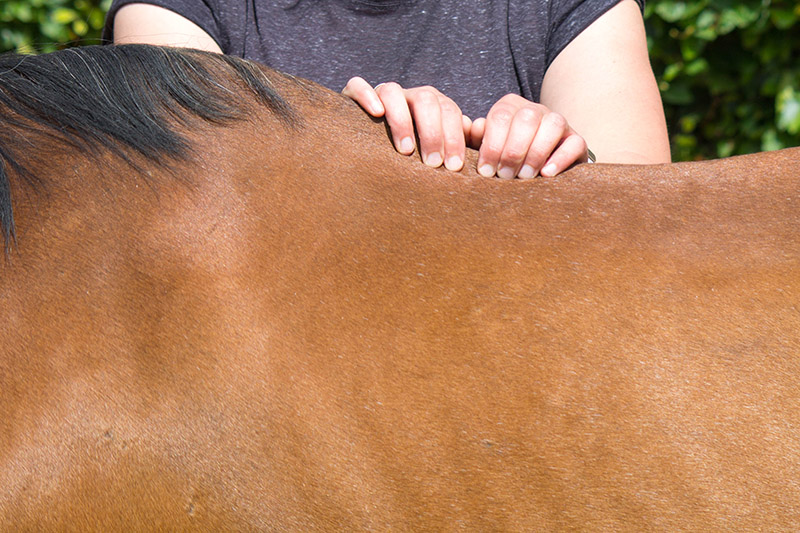
What Are the Different Types of Chiropractors?
There are many different types of chiropractors. You will probably have heard of human chiropractors, or possibly even used one yourself.
Human chiropractors work on children and adults addressing different problems. Veterinary chiropractors are a professional body that uses chiropractic techniques that have been adapted from human practices and applied to animal patients. Veterinary chiropractors usually treat either horses, dogs, or cats. Other animals can be treated but the three above are the most commonly found.
Horse chiropractors will examine the animal and determine where the problem is. They will then use forces applied to different areas to make adjustments that loosen tightened muscles and aid in the correct movement of joints.
Where Is It Used?
Horses often require a chiropractor if they have misalignment issues through being ridden by different people. There is a huge variation in the weight and position that different riders will sit and move around on the horse’s back. Over time this will cause strain. Some horses will experience misaligned issues simply from normal wear and tear of joints, muscles, and nerves as they grow older. They may also experience issues from injuries.
Indications for a chiropractor include, but are not limited to:
- Acute injuries
- Stiffness/muscle tension
- Chronic musculoskeletal issues
- Prophylactic treatment to keep a certain standard of fitness (for example, performance horses)
- Enhancement of performance in performance horses
- Maintenance of normal function in older animals
- Used alongside veterinary treatment for chronic lameness issues including spondylosis, arthritis, tendon issues, or navicular syndrome.
Typical clinical signs seen in horses that may indicate use of a chiropractor include:
- Turning of the head sharply
- Head tilt
- Asymmetric confirmation
- Twitching/flicking the tail
- Holding back ears when the saddle is put on
- Abnormal posture
- A long warm-up required
- Reduction in performance
- Stamping
- Rearing up
- Disobedience when being ridden
- Refusing jumps
- Poor bascule
- Hard on the bit suddenly
- Reluctance to canter/gallop
- Poor transitions
- Shortened stride
- Holding rider off to one side
- Sensitive to touch
- Whining/vocalization
- Uneven wearing of shoes
Some owners choose to consult a chiropractor alongside their vet for any mobility issues. Anything that affects the spine, will have an effect on many different parts of the body.
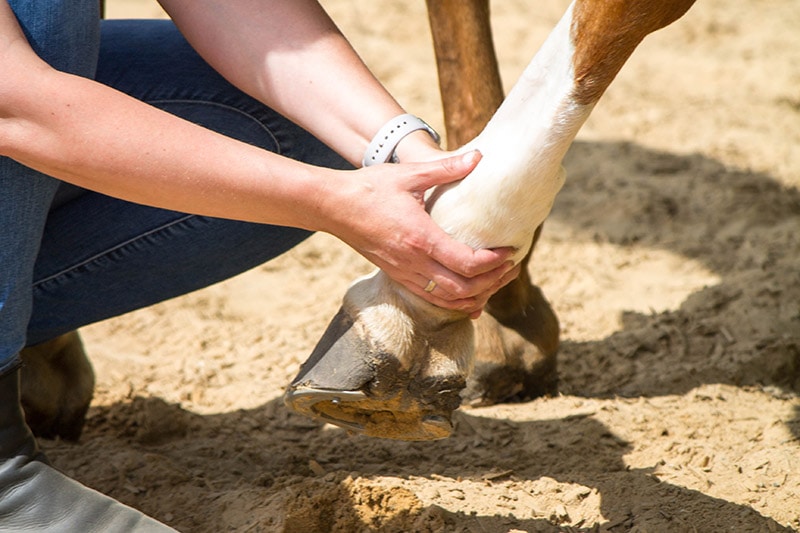
Pros and Cons of Horse Chiropractic
It is important for owners to make an informed decision when choosing whether to use a horse chiropractor. Chiropractic can help to reduce pain and inflammation and to maintain a good range of motion. However, the therapy is not without risks. It is very important to discuss a treatment plan with your veterinarian before using a horse chiropractor.
Advantages of Horse Chiropractic
- Chiropractic provides a different therapeutic approach that is diverse from conventional veterinary medicine.
- Chiropractic is a useful tool to use alongside veterinary medicine to aid in the management of muscular, neurological, and joint problems.
- Chiropractic is non-invasive.
- Chiropractic can usually be carried out easily on a conscious animal and therefore doesn’t require sedation.
- It has been known to treat chronic issues when conventional veterinary methods have been exhausted. (Although it is always advised to consult your vet first and foremost)
- Due to the nature of the therapy, there are usually no side effects.
- There is usually little or no downtime required after a session. (Although it may be recommended not to ride the horse for a short period in the initial stages).
Disadvantages of Horse Chiropractic
- Chiropractic cannot be used as a cure, only as a complementary therapy alongside appropriate veterinary care.
- It cannot be used for serious health issues such as bone fractures, cancer, non-mechanical joint disorders, infections, or metabolic disease.
- Acute injuries will always require veterinary attention initially, chiropractic cannot be used as a first-line response in these cases.
- A thorough neurological assessment is required before the commencement of treatment to ensure that chiropractic will not be doing more harm than good.
- Serious or life-threatening conditions need to be ruled out before considering chiropractic care.
- Chiropractic care cannot be used to cure severe degenerative diseases.
- Risk of potential overadjustment or injury.
Cost Considerations
Horse chiropractic can be expensive, so it is important that owners make informed decisions and prioritize the correct veterinary care according to their budget or their insurance policy. Usually, a regular treatment plan is required as opposed to a one-off visit, so a frank discussion must be had on affordability and whether the owner can afford essential veterinary treatment alongside complementary therapies.
Having said this, often it is the case that since regular chiropractic care can help improve the performance and general health of the horse, it may save time and money in the long term. If regular adjustments are carried out and are successful in treating or alleviating common chronic problems, there may be fewer of the clinical signs described above that indicate the need for a visit from the vet.
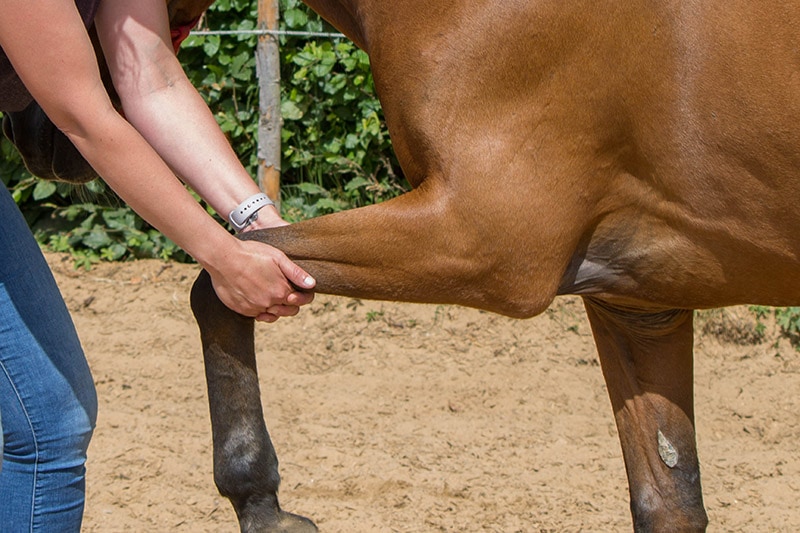
Requirements and Certification
It is important to remember that certifying agencies vary hugely depending on the country and state. In North America, there are two different certifying agencies. These are the American Veterinary Chiropractic Association (AVCA) and the International Veterinary Chiropractic Association (IVCA).
To earn certification, an individual must study a program, followed by sitting practical and clinical exams approved by one of the governing bodies above. Depending on the area, some places require, by law, a veterinarian to oversee and supervise the therapy or arrange a referral for treatment by an equine chiropractor. Chiropractic is described as a form of complementary and alternative treatment.
Other treatments under this category include physical therapy and acupuncture. The AVMA Model Veterinary Practice Act says that complementary and alternative treatment is included in the definition of veterinary medicine. This has been adopted in 20 states in America since 2016. Different states have different rules and regulations regarding Equine Chiropractic. Most of them require a degree of veterinary supervision or a referral from a vet for treatment. Interestingly, veterinary chiropractic is not actually recognized by the American Chiropractic Association as being chiropractic.

Frequently Asked Questions (FAQs)
How often should a horse see a chiropractor?
How often your horse needs to visit the equine chiropractor depends on the nature of the condition and how severe it is. If the symptoms are acute or if treatment has only just been started, appointments are usually spaced 2–4 weeks apart. As clinical signs start to improve, appointments can be arranged at 4–6-month intervals. There is no strict formula for this, and it is decided on an individual case basis.
How long should a horse rest after a chiropractic session?
The rest period for your horse after a chiropractic session depends on the nature of the problem. Some chiropractors will recommend a short period of rest (for example 48 hours) to allow for the horse’s body to adjust to changes made. This is more important after the first few treatments as the horse will not have experienced it before.
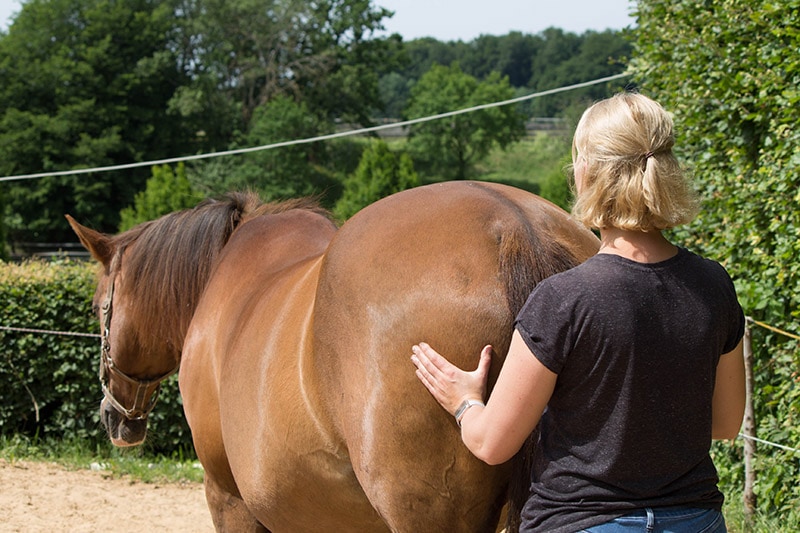
Is chiropractic painful for horses?
Chiropractic procedures are not generally painful for horses when they are being carried out. After the treatment has finished, horses will sometimes show signs of soreness or stiffness. This is similar to that of DOMS (delayed onset muscle soreness) we experience after doing exercises after a long period of rest or sedentary behavior. They will always recover within 48 hours. If a problem persists longer than this, or if you are at all worried, consult your vet immediately.
What happens during a visit?
The chiropractor will begin by taking a full clinical history from you including any recent injuries, the level of work the horse does, and what your concerns and expectations are. The chiropractor will examine your horse by palpating their body and using their hands to assess areas of stiffness or tension. They will carry out a thorough workup to identify and locate any bone-related, neurological, or soft-tissue problems. They will then attempt to initiate the treatment if deemed appropriate by applying pressure to the problem areas.

Conclusion
Horse chiropractic care is a non-invasive, hands-on therapy that can be suitable for lots of different health and mobility issues. The aim of the therapy is to focus on obtaining optimal functioning of the muscular, skeletal, and neurological systems. If there is biomechanical dysfunction of the spine this has a knock-on effect on the whole body.
Horse chiropractic treatment is in no way a replacement for conventional veterinary medicine, however, it can provide a useful and effective approach to tackling the complex issues associated with horse mobility issues. It is likely that all horses being worked will benefit from chiropractic care.
Featured Image Credit: Samoli, Shutterstock
Tags
What do you think?
Related Articles

New Puppy Checklist: Gear You’ll Need for Your New Dog
Getting a new puppy is really exciting, but before you welcome them home, it’s important to prepare your space for them. Since puppies need a

How Big Do Mini Poodles Get? Vet Reviewed Average Weight & Growth Chart – Dogster
The information is current and up-to-date in accordance with the latest veterinarian research. Learn more » When you buy a Miniature Poodle, you might not

Can Police Dogs Smell Nicotine? Vet Verified Facts & Info – Dogster
The information is current and up-to-date in accordance with the latest veterinarian research. Learn more » While cigarette sales have been declining steadily for decades,

How Old Is 5 in Dog Years? Vet-Approved Guide to Each Size of Dog – Dogster
The information is current and up-to-date in accordance with the latest veterinarian research. Learn more » A common method for calculating a dog’s age is

